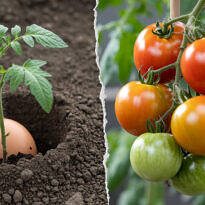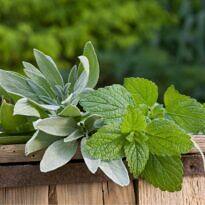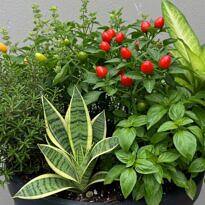The Powdery Farina on Succulents: A Vital Coating for Protection and Beauty
The powdery farina is a waxy coating that naturally forms on the surface of some plants, including succulents. It is often described as a whitish, opaque, or powdery coating that gives a smooth and velvety appearance to the leaves and stems of these plants. While it is most commonly observed in succulents, powdery farina can also be found on other plants, such as certain fruit and leaf species.
Powdery farina is primarily composed of epicuticular waxes, which are lipid substances secreted by the plant’s epidermal cells. They are nonpolar and repel water, directing droplets straight to the ground and the plant’s roots. These waxes serve the purpose of protecting the plant from excessive water loss by minimizing transpiration. Additionally, powdery farina plays other important roles in the survival and adaptation of succulents.
The Importance of Powdery Farina in Succulent Protection
One of the main functions of powdery farina is protection against solar radiation. It acts as a filter, reducing the amount of direct sunlight that reaches the plant’s cells. This is particularly relevant for succulents, which typically grow in arid environments exposed to intense light. Powdery farina helps minimize the stress caused by ultraviolet radiation, which can damage plant cells and cause sunburn.
Furthermore, powdery farina also aids in preventing water loss through transpiration. Succulents have limited capacity to absorb and store water in their tissues due to the nature of the environments in which they grow. The powdery farina forms a protective layer on the leaves and stems, reducing the rate of water evaporation through stomata (small pores on the leaf surface). This helps succulents conserve water, increasing their drought tolerance and allowing them to survive in adverse environmental conditions.
Powdery Farina: Defense Against Insects and Diseases
Another function of the powdery farina is protection against insects and diseases. The waxy surface makes it difficult for harmful insects like aphids and mites to attach, and it hinders the penetration of fungal and bacterial pathogens. Additionally, powdery farina can impede the movement of insect larvae, making them less likely to feed on succulent leaves and stems.
Aesthetic Beauty and Attraction of Succulents
Powdery farina also plays an aesthetic role in succulents, giving them a distinctive and attractive appearance. The white or bluish coating creates an interesting visual contrast with the vibrant colors of the leaves and stems, making succulents popular ornamental plants. Many succulent enthusiasts value powdery farina as a desirable aesthetic feature.
However, it is important to note that not all succulents possess powdery farina. The presence of this coating varies among species and can be influenced by environmental factors such as light intensity and humidity. Some succulents produce powdery farina only during certain times of the year or under specific growing conditions.
In summary, powdery farina is a waxy coating found on some succulents that serves several important functions. It protects plants from solar radiation, reduces excessive transpiration, assists in insect and disease resistance, and contributes to the aesthetic beauty of these plants. Understanding the importance of powdery farina can help succulent enthusiasts better care for these plants and appreciate their unique beauty.
How to Care for and Protect the Powdery Farina
Protecting powdery farina and cleaning succulents with this coating requires special care to avoid damaging it. Here are some simple tips to maintain the integrity of powdery farina when caring for your succulents:
- Avoid touching powdery farina directly: When handling succulents with powdery farina, it’s important to avoid touching this waxy coating directly. Powdery farina can be delicate and easily removed by constant contact with hands or other tools. Use soft fabric gloves or hold the plant by the stems or areas without powdery farina to prevent damage.
- Gentle cleaning: When cleaning the leaves or stems of succulents with powdery farina, opt for gentle methods. Use a soft brush, such as a makeup or painting brush, to remove dirt or dust accumulated on the plant’s surface. Gently dust off without applying excessive pressure to avoid scratching or damaging the powdery farina. A handheld blower or a hair dryer on the “cool” setting can also help remove debris from the succulent’s leaves. Water can also be helpful, but avoid high-pressure jets and ensure the succulent is not left wet after cleaning.
Remember that not all succulents have powdery farina, so when choosing cleaning methods or care techniques, be sure to adapt them to your plant’s specific needs. With these simple precautions, you can protect powdery farina and enjoy the natural beauty and protective advantages it offers to your succulents.







